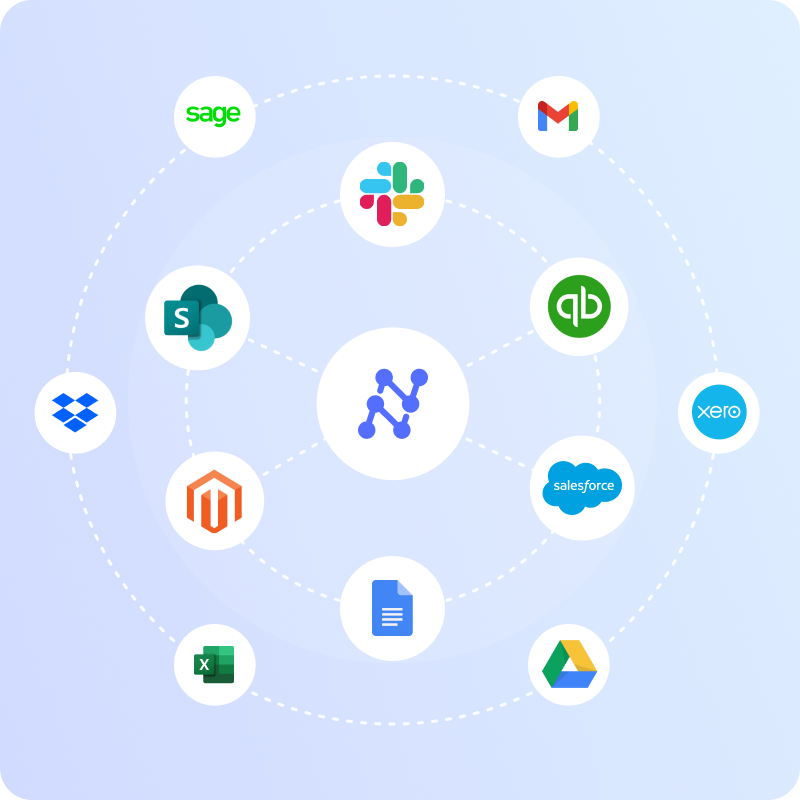Supply chains are cumbersome to manage and navigate for all businesses.
Any inefficiencies, operational turnaround pains, costs associated with manual processes and unpredictable delays will cut down profits significantly.
What is Supply Chain Optimization?
Supply Chain Optimization is the process of enhancing the efficiency and effectiveness of the entire supply chain.
In this blog, we will discuss five essential optimization practices for supply chain optimization today. These include –
- setting clear performance metrics (KPIs),
- automating processes,
- negotiating better terms with suppliers through SPM,
- improving forecasting accuracy,
- optimizing inventory management.
Let’s get started.
Step 1: Setting clear performance metrics (KPIs)
Setting clear performance metrics, or Key Performance Indicators (KPIs), is the cornerstone of any successful supply chain optimization strategy.
KPIs serve as quantifiable measures that help businesses track and assess the efficiency of various supply chain activities.
Without these metrics, it’s challenging to identify areas needing improvement or to celebrate areas of success.
Start by understanding your business’s primary goals. Are you focused on reducing costs, improving delivery times, or enhancing customer satisfaction? Your KPIs should directly reflect these objectives.
Vague KPIs won’t help you much. Instead of setting a goal like “improve delivery times,” aim for “reduce delivery times by 10% within the next six months.” This specificity makes it easier to measure progress and determine success.
Effective KPIs should cover all critical aspects of your supply chain, from procurement to delivery.
Common KPIs include order accuracy, inventory turnover rates, supplier performance, and customer satisfaction levels.
Here is a comprehensive list of metrics that you can consider tracking, based on your objectives. Click on each objective to explore potential KPIs.
| KPI | Calculation |
|---|---|
| Cost Savings | (Baseline Cost – Actual Cost) / Baseline Cost x 100 |
| Cost Avoidance | (Expected Cost – Actual Cost) / Expected Cost x 100 |
| Total Spend Under Management | Total Spend Under Management / Total Procurement Spend x 100 |
| KPI | Calculation |
|---|---|
| Supplier On-time Delivery (OTD) | (Number of On-time Deliveries / Total Deliveries) x 100 |
| Supplier Quality Rate | (Number of Acceptable Goods / Total Goods Received) x 100 |
| Supplier Compliance Rate | (Number of Compliant Supplier Actions / Total Supplier Actions) x 100 |
| KPI | Calculation |
|---|---|
| Purchase Order Cycle Time | Total Time for All Purchase Orders / Number of Purchase Orders |
| Procurement ROI | (Savings – Cost of Procurement Operations) / Cost of Procurement Operations |
| E-Procurement Usage Rate | (Value of E-Procurement Transactions / Total Procurement Transactions) x 100 |
| KPI | Calculation |
|---|---|
| Contract Utilization Rate | (Value of Spend Under Contracts / Total Procurement Spend) x 100 |
| Percentage of Spend with Preferred Suppliers | (Spend with Preferred Suppliers / Total Procurement Spend) x 100 |
| KPI | Calculation |
|---|---|
| Inventory Turnover Rate | Cost of Goods Sold / Average Inventory |
| Inventory Accuracy | (Correct Inventory Records / Total Inventory Records) x 100 |
| Days of Inventory on Hand (DOH) | (Average Inventory / Cost of Goods Sold) x 365 |
| KPI | Calculation |
|---|---|
| Sustainable Procurement Rate | (Sustainable Procurement Spend / Total Procurement Spend) x 100 |
| Supplier Risk Assessments Completed | (Number of Supplier Risk Assessments Completed / Total Number of Suppliers) x 100 |
Step 2: Automating Processes
Manual processes are not only slow and error-prone but also costly.
Automation is a game-changer in supply chain management.
By leveraging technology, businesses can automate repetitive and time-consuming tasks and free up valuable human resources for more strategic tasks.
This leads to faster turnaround times, improved accuracy, and a more efficient supply chain.
Key Components and Technologies Involved
Below are the key components of a modern automated supply chain workflow.
Optical Character Recognition & Intelligent Document Processing

By automating data entry and extraction, OCR reduces human error and speeds up information processing. This is particularly important when handling complex supply chain documents like invoices, purchase orders, and shipping manifests.
Workflow Automation and Integrations

Workflow automation streamlines the flow of tasks and information between different apps and databases. This ensures smooth operations and real-time visibility throughout the supply chain.
Accounts Payable (AP) Automation and Invoice Matching

AP automation simplifies the entire accounts payable process, from receiving invoices to making payments.
Firstly, this technology automates invoice capture, approval workflows, and payment processing, significantly cutting down processing times and errors.
Secondly, invoice matching is a vital part of AP automation, ensuring accurate matching of invoices with purchase orders and receiving documents, preventing discrepancies and fraud.
Thirdly, integrating AP automation with accounting software ensures seamless data flow, improving accuracy and efficiency in financial management. This integration eliminates manual data entry, reduces the risk of errors, and provides real-time visibility into financial transactions, enabling better decision-making and financial control.
Robotic Process Automation (RPA)
.png)
RPA involves using software robots to automate repetitive tasks. In supply chain management, RPA can streamline activities such as order processing, inventory tracking, data entry, and customer service operations.
To get started with supply chain automation, read our in-depth blog on how to automate your supply chain by clicking below –
The Ultimate Guide to Supply Chain Automation
The ultimate guide to supply chain automation. Discover key technologies, top software of 2024, and practical implementation insights.

Step 3: Negotiating better terms with suppliers through SPM
Suppliers’ performance management, or SPM, is the strategic way of managing and optimizing suppliers’ performance.
This involves appraisal and management of the operations of a supplier to ensure that maximum value is offered to the company.
Good SPM allows a company to:
- Enhance performance and increase reliability of suppliers
- Reduce supplier risk and the impact from supply chain disruptions
- Get better prices
- Improve quality and standards of compliance
How to Implement SPM?
Consider the following steps to get started with SPM in your supply chain.
Step 1: Segment Suppliers and Use Filters
There are a number of suppliers with varying importance to your company. The suppliers that are critical, those that are important and the ones that do not make a significant impact.
Read more on identification of key suppliers below.
Key Suppliers | Identify & Manage Key Vendors & Suppliers
Identifying, monitoring, and managing key suppliers can help your business reduce risk, save money, and foster innovation.

Step 2: Define Performance Measures
Develop explicit, measurable performance measures of suppliers. Common metrics include delivery performance, quality standards, compliance with regulations, and cost-effectiveness. Read more below.
What are supplier performance measures? | ADR International
ADR International

Step 3: Maintain a Supplier Scorecard
Create a supplier scorecard to track and evaluate supplier performance against the defined metrics. This should be a dynamic document that is regularly updated with performance data.
Step 4: Conduct Regular Performance Reviews
Conduct regular performance reviews with your critical suppliers. Feed into that the data from the scorecard to discuss their performance, discuss any problems, and learn what opportunities there are for improvement.
Step 5: Negotiate Better Terms
Leverage the data and insights derived during SPM to negotiate better / improved terms with your suppliers. You can point out where exactly they lack and offer mutually beneficial changes in contracts.
7 Tips for Negotiating Better Payment Terms With Your Suppliers
One of the most effective ways to improve your cash flow is to lengthen your payment terms with vendors and suppliers. Learn how to do it.

Step 4: Improving forecasting accuracy
Accurate forecasting is critical to supply chain optimization.
By predicting future demand, businesses can ensure they have the right products in the right quantities at the right time, reducing excess inventory and minimizing stockouts. Supply chain forecasting can be quantitative or qualitative.
Quantitative forecasting relies on numerical data and statistical methods to predict future trends. These methods are best when you have ample historical data and a relatively stable environment –
- Exponential Smoothing: Uses weighted averages of past data, giving more importance to recent observations. Ideal for short-term forecasts and easy to implement with the right tools. Example: Predicting next month’s sales based on recent sales trends.
- Adaptive Smoothing: An advanced version of exponential smoothing that adjusts weights based on data fluctuations. Requires automation tools for real-time data processing. Example: Adapting sales forecasts quickly in response to sudden market changes.
- Moving Average
- Regression Analysis
- Life Cycle Modeling
For a deeper dive into these methods, do a web search to explore more detailed resources and case studies. This introduction aims to give you a starting point to enhance your supply chain forecasting effectively.
Qualitative forecasting uses expert opinions, market research, and other non-quantifiable information. It’s useful when historical data is limited or not applicable.
- Market Research: For example, conducting customer surveys to predict demand for a new product.
- Delphi Method: Process involves gathering insights from a panel of experts through multiple rounds of questioning. This reduces bias and reaches a consensus on future trends. Example: Forecasting long-term industry trends by consulting with market analysts.
Step 5: Optimizing inventory management
Inventory optimization is all about managing stock levels strategically across a company’s supply chain to cut costs, make customers happier, and boost profits.
If you don’t manage your inventory well, you will run into big problems like losing revenue because you’re out of stock and wasting money on excess inventory that just sits on the shelves.
Now, let’s dive into one of the techniques that businesses use to optimize their inventory.
ABC Analysis is an inventory categorization method that divides items into three categories (A, B, and C) based on their importance to the business.
Category A items are the most valuable, Category B items are of moderate value, and Category C items are the least valuable. This method helps businesses prioritize their inventory management efforts to focus on the most critical items.
Consider a small retailer specializing in electronic goods such as smartphones, laptops, accessories, and home appliances. This retailer aims to implement inventory control using the ABC system to classify products based on their significance and value to the business.
These are the steps the retailer would follow –
1. Gather Data: Collect sales history for the last year. Collect the purchase prices of each item. Track the usage rate/frequency of each item.
2. Assign a Value to Each Item: Calculate the dollar value each product has generated in the last year. Assign weights based on revenue, with the highest dollar-value items receiving the highest weights.
3. Categorize Items: Once done, the categorization might look like this –
- Category A: Products generating 70% of the total revenue; for example, smartphones and laptops.
- Category B: Products generating 20% of the total revenue; for example, high-end accessories.
- Category C: Products generating 10% of the total revenue; for example, miscellaneous accessories and small home appliances.
4. Adjust Inventory Levels: Inventory levels can now be adjusted for each item based on it’s categorization.
- Category A: Maintain a higher inventory to avoid stockouts.
- Category B: Maintain a medium level of inventory, balancing availability and carrying costs.
- Category C: Keep limited stock and order as needed.
By following this approach, the retailer can effectively prioritize inventory management efforts, ensuring that the most critical items are always available while minimizing carrying costs for less significant items.
Some other techniques include –
- Economic Order Quantity (EOQ)
- Just-In-Time (JIT) Inventory
- Safety Stock Inventory
- Reorder Point Formula
- Consignment Inventory
For a deeper dive into these methods, do a web search to explore more detailed resources and case studies. This introduction aims to give you a starting point to enhance your supply chain forecasting effectively.
Conclusion
Supply chain optimization isn’t just a one-time thing, but rather an ongoing journey that requires continuous effort and attention.
By implementing the five essential practices we discussed in this blog, you can significantly improve the efficiency and effectiveness of your supply chain.
And here’s the thing: there are even more techniques you can explore on your own. Businesses need to constantly monitor and adjust their strategies to adapt to changing market conditions and technological advancements.
By staying proactive and committed to continuous improvement, you can turn your supply chain into a competitive advantage for your business.

